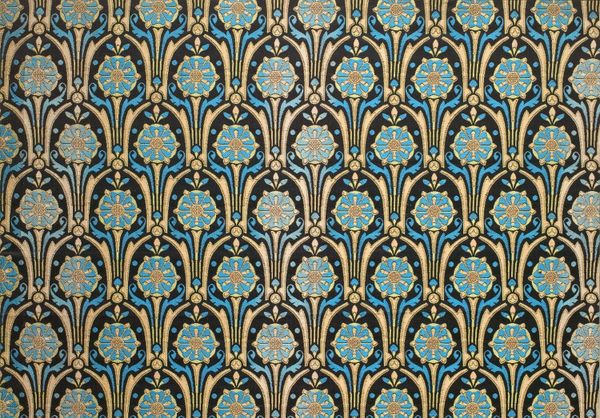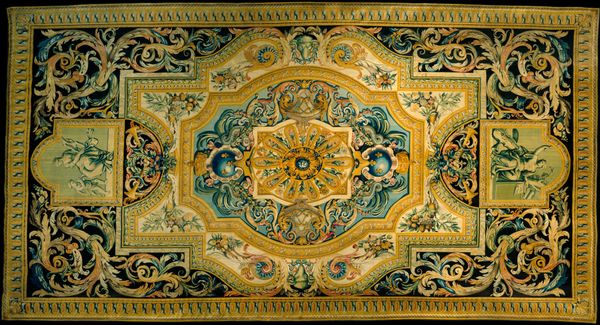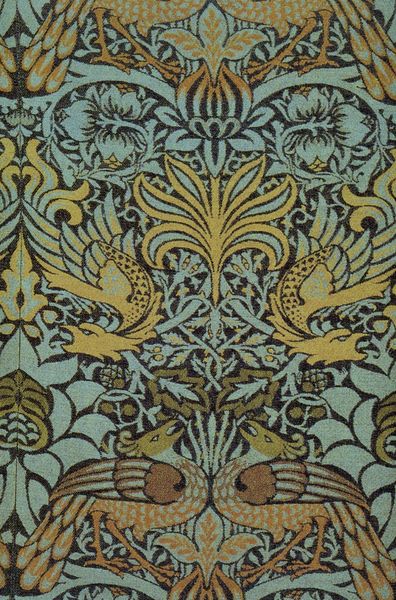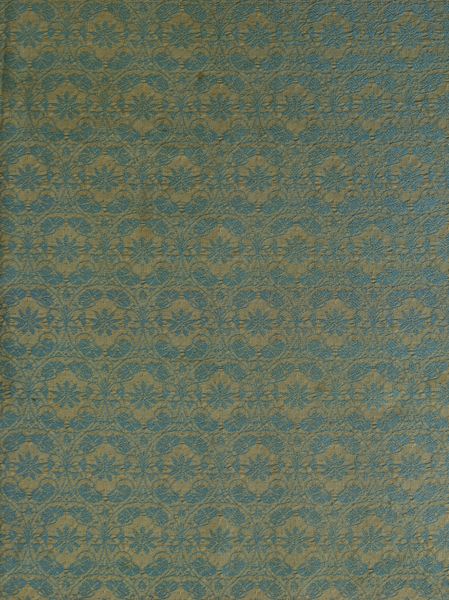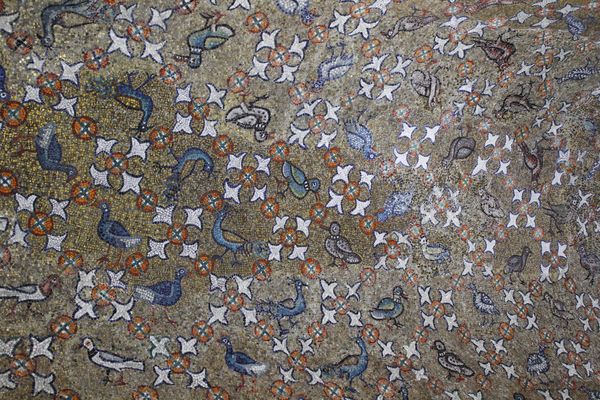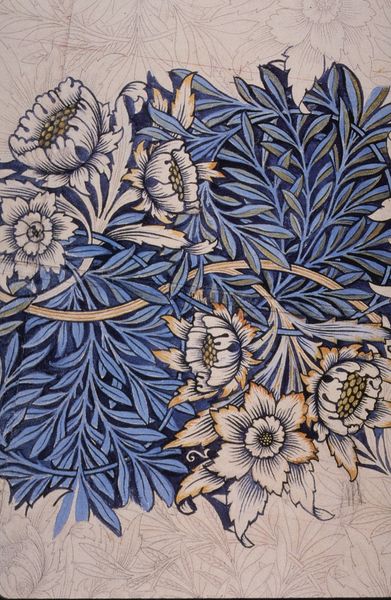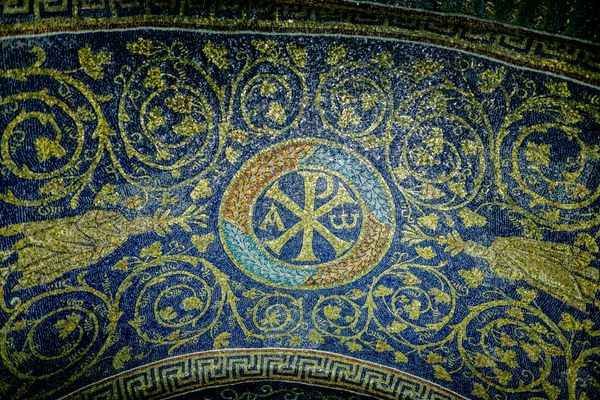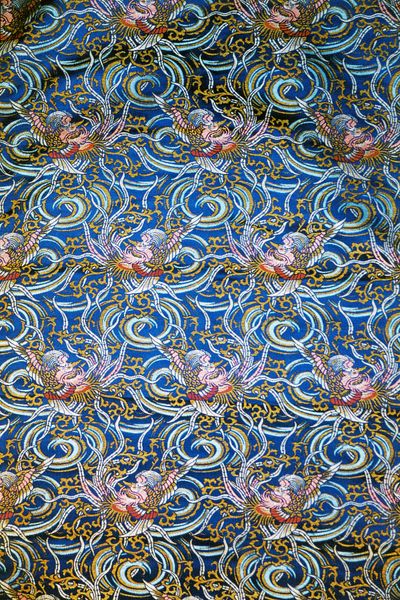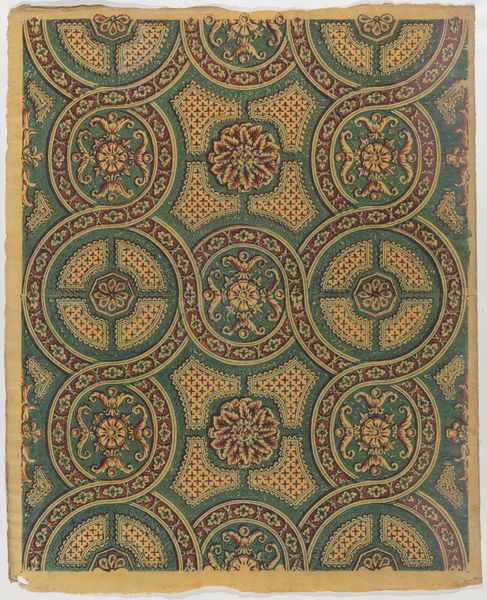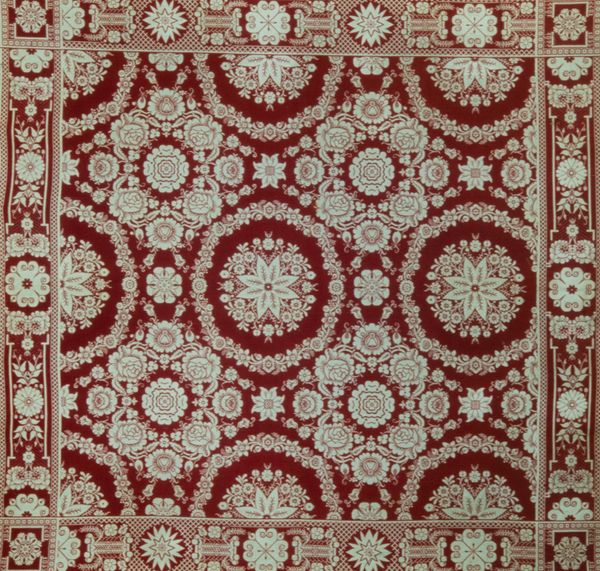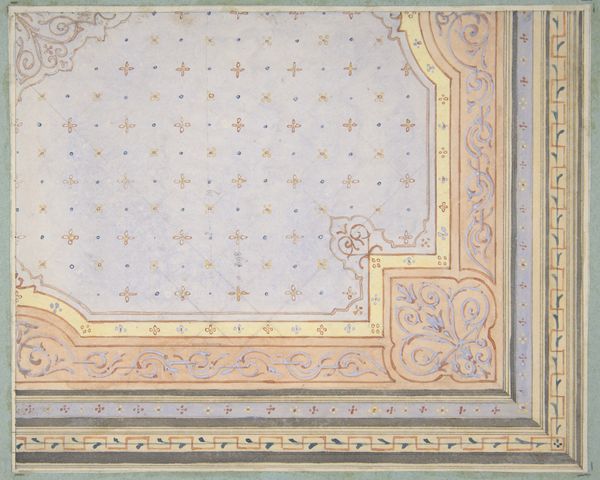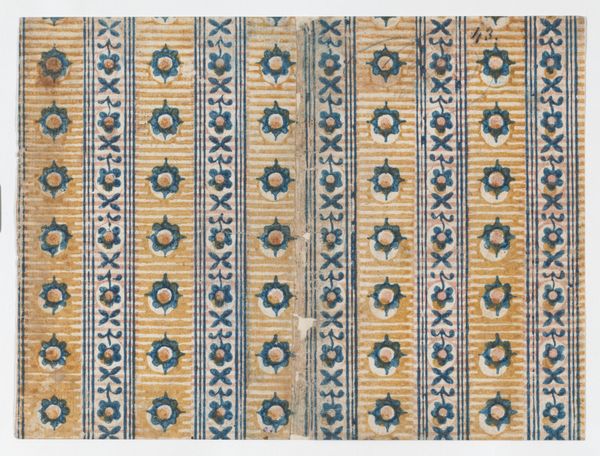
mosaic
#
mosaic
#
byzantine-art
#
geometric
#
decorative-art
Copyright: Public domain
Curator: What a mesmerizing deep blue! It gives the impression of floating in space, gazing up at distant stars. Editor: That's an apt description of the mosaic ceiling we are observing within the Mausoleum of Galla Placidia, located in Ravenna, Italy. Dating back to about 425 AD, this stunning work represents early Byzantine artistry. Curator: The context of the mausoleum itself adds layers to this stellar pattern. It was commissioned by a woman of incredible power, Galla Placidia, who was a Roman Empress. What can you say about that kind of a statement on identity and power, realized in glittering mosaic tesserae? Editor: Power and identity are clearly communicated here but so are sophistication, balance, and hierarchy through visual syntax. I am seeing how the concentric circles draw the eye and provide visual focus. There's something almost hypnotic in the ordered repetition. The contrasting warm colors, like the rust and gold, keep it from feeling too cold or distant, and activate the space between elements. It is very considered, as is the subtle texture made by the hand-laid tesserae that comprise this gorgeous ceiling. Curator: Absolutely. We must consider Galla Placidia's role as regent during a turbulent time, her influence extending over both the Western and Eastern Roman empires. How she claimed and wielded authority, at a time when powerful women were frequently written out of history. And so the use of deep blues could symbolize the imperial might of Byzantium, drawing from both pagan and Christian iconographies in complex and nuanced ways. What might it say to install this geometric schema above one's entombed body? Editor: Perhaps the repetitive visual language invites contemplation on more abstract concepts. Looking closely at the geometric organization here allows me to imagine how different interpretive strategies may emerge in viewers, while being respectful of a time that produced art to embody concepts, ideals, beliefs and/or, most fundamentally, optical truth and balance. Curator: Viewing the mosaic not as merely decorative, but as an ideological text reflecting broader sociopolitical forces makes this small structure, almost otherworldly. Its impact goes beyond the visual delight in its chromatic richness. Editor: I find it remarkable how the material itself elevates our engagement; each tiny piece painstakingly placed. Such intentionality elevates its significance and suggests the careful deliberation behind this commission.
Comments
No comments
Be the first to comment and join the conversation on the ultimate creative platform.
